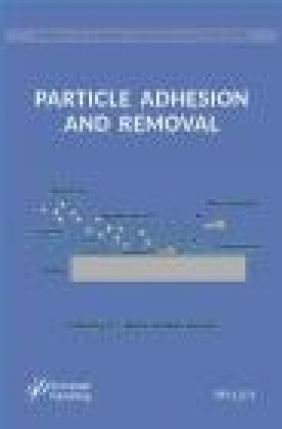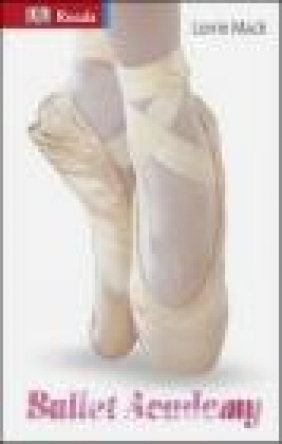Particle Adhesion and Removal
Ravi Jaiswal, K. L. Mittal
Particle Adhesion and Removal
Ravi Jaiswal, K. L. Mittal
- Producent: John Wiley
- Rok produkcji: 2015
- ISBN: 9781118831533
- Ilość stron: 576
- Oprawa: Twarda
Niedostępna
Opis: Particle Adhesion and Removal - Ravi Jaiswal, K. L. Mittal
The book provides a comprehensive and easily accessiblereference source covering all important aspects of particleadhesion and removal. The core objective is to cover bothfundamental and applied aspects of particle adhesion and removalwith emphasis on recent developments.
Among the topics to be covered include:
1. Fundamentals of surface forces in particle adhesion andremoval. 2. Mechanisms of particle adhesion and removal. 3. Experimental methods (e.g. AFM, SFA,SFM,IFM, etc.) tounderstand particle-particle and particle-substrateinteractions. 4. Mechanics of adhesion of micro- and nanoscaleparticles. 5. Various factors affecting particle adhesion to a variety ofsubstrates. 6. Surface modification techniques to modulate particleadhesion. 7. Various cleaning methods (both wet & dry) for particleremoval. 8. Relevance of particle adhesion in a host of technologies rangingfrom simple to ultra-sophisticated.
Preface xv Part 1: Particle Adhesion: Fundamentals 1 1 Fundamental Forces in Particle Adhesion 3 Stephen Beaudoin, Priyanka Jaiswal, Aaron Harrison, JenniferLaster, Kathryn Smith, Melissa Sweat, and Myles Thomas 1.1 Introduction 3 1.2 Various Forces in Particle Adhesion 4 1.3 Summary 69 References 70 2 Mechanics of Particle Adhesion and Removal 81 Goodarz Ahmadi 2.1 Introduction 81 2.2 Models 83 2.3 Simulations Results 96 2.4 Summary and Conclusions 99 Acknowledgements 100 References 100 3 Microscopic Particle Contact Adhesion Models and MacroscopicBehavior of Surface Modified Particles 105 Katja Mader-Arndt, Zinaida Kutelova, and JurgenTomas 3.1 Introduction 105 3.2 Constitutive Contact Models 107 3.3 Macroscopic Powder Behavior Continuum MechanicsApproach 121 3.4 Surface Modification to Alter the Adhesion Properties 124 3.5 Experimental Measurements of the Adhesion Forces 130 3.6 Summary and Conclusions 146 Acknowledgements 147 List of Symbols 147 References 148 4 Characterization of Single Particle Adhesion: A Review ofRecent Progress 157 Armin Saeedi Vahdat and Cetin Cetinkaya 4.1 Introduction 157 4.2 Background 159 4.3 Recent Developments 167 4.4 Conclusions and Remarks 193 Acknowledgments 194 List of Symbols 194 References 196 Part 2: Particle Removal Techniques 201 5 High Intensity Ultrasonic Cleaning for Particle Removal203 Sami B. Awad and Nadia F. Awad 5.1 Introduction 204 5.2 Ultrasound and Ultrasonics 204 5.3 Cavitation Phenomenon 207 5.4 Generation of Ultrasound - Transducers 211 5.5 Ultrasonic Generators 217 5.6 Principles of Ultrasonic Cleaning for Particle Removal219 5.7 Determination of Residual Particles on Surfaces 223 5.8 Ultrasonic Aqueous Cleaning Equipment and Process 225 5.9 Precision Cleaning 228 5.10 Contaminants 228 5.11 Ultrasonic Cavitation Forces and Surface Cleaning 230 5.12 Cleaning Chemistry 232 5.13 Mechanism of Cleaning 236 5.14 Cavitation Erosion 238 5.15 Summary 239 References 239 6 Megasonic Cleaning for Particle Removal 243 Manish Keswani, Rajesh Balachandran, and PierreDeymier 6.1 Introduction 243 6.2 Principles of Megasonic Cleaning 247 6.3 Particle Removal Mechanisms During Megasonic Cleaning 259 6.4 Types of Megasonic Systems 262 6.5 Particle Removal and Feature Damage in Megasonic Cleaning264 6.6 Summary 274 References 274 7 High Speed Air Jet Removal of Particles from Solid Surfaces281 Kuniaki Gotoh 7.1 Introduction 281 7.2 Fundamental Characteristics of the Air Jet 282 7.3 Fundamentals of Air Jet Particle Removal 286 7.4 New Methods Using Air Jet 300 7.5 Summary and Prospect 307 List of Symbols 308 References 309 8 Droplet Spray Technique for Particle Removal 313 James T. Snow, Masanobu Sato, and Takayoshi Tanaka 8.1 Introduction 313 8.2 Droplet Impact Phenomena 314 8.3 Cleaning Process Window 318 8.4 Droplet Spray Technique for Semiconductor Wafer Cleaning324 8.5 Summary 331 References 331 9. Laser-Induced High-Pressure Micro-Spray Process for NanoscaleParticle Removal 337 Daehwan Ahn, Changho Seo, and Dongsik Kim 9.1 Introduction 337 9.2 Concept of Droplet Opto-Hydrodynamic Cleaning (DOC) 340 9.3 Micro-Spray Generation by LIB 343 9.4 Mechanisms of Particle Removal by Laser-Induced Spray Jet344 9.5 Generation of Micro-Spray Jet 345 9.6 Nanoscale Particle Removal 352 9.7 Summary 360 References 360 10 Wiper-Based Cleaning of Particles from Surfaces 365 Brad Lyon and Jay Postlewaite 10.1 Introduction 366 10.2 Basic Mechanism of Wiping for Cleaning of Particles and OtherContaminants 371 10.3 Various Types of Wipers 379 10.4 Proper Ways to Carry Out Wiping or How to Use Wipers Properly390 10.5 Characterization of Wipers 396 10.6 Results Obtained Using Wiping 398 10.7 Future Directions 405 10.8 Summary 406 References 408 11 Application of Strippable Coatings for Removal of ParticulateContaminants 411 Rajiv Kohli 11.1 Introduction 411 11.2 Coating Description 412 11.3 Types of Strippable Coatings 413 11.4 Issues with Strippable Coatings 426 11.5 Precision Cleaning Applications 427 11.6 Summary 443 Disclaimer 443 References 443 12 Cryoaerosol Cleaning of Particles from Surfaces 453 Souvik Banerjee 12.1 Introduction 453 12.2 History of Cryoaerosol Cleaning 455 12.3 Thermodynamics of Cryoaerosol Processes 456 12.4 Cleaning Mechanism 461 12.5 Factors Affecting Cleaning Performance 462 12.6 Results Obtained by Cryoaerosol Cleaning 469 12.7 Summary and Prospects 473 References 474 13 Supercritical Carbon Dioxide Cleaning: Relevance to ParticleRemoval 477 Rajiv Kohli 13.1 Introduction 477 13.2 Surface Cleanliness Levels 478 13.3 Dense Phase Fluids 479 13.4 Principles of Supercritical CO2 Cleaning 489 13.5 Advantages and Disadvantages of Supercritical CO2 Cleaning493 13.6 Applications 496 13.7 Summary and Conclusions 502 Acknowledgement 503 Disclaimer 503 References 503 14 The Use of Surfactants to Enhance Particle Removal fromSurfaces 519 Brian Grady 14.1 Introduction 519 14.2 Solid-Solid Interactions 520 14.3 Introduction to Surfactants 524 14.4 Surfactant Adsorption at Solid Surfaces 529 14.5 Surfactants and Particulate Removal 535 14.6 Prospects 539 14.7 Summary 540 Acknowledgements 540 References 540 Index 543
Szczegóły: Particle Adhesion and Removal - Ravi Jaiswal, K. L. Mittal
Tytuł: Particle Adhesion and Removal
Autor: Ravi Jaiswal, K. L. Mittal
Producent: John Wiley
ISBN: 9781118831533
Rok produkcji: 2015
Ilość stron: 576
Oprawa: Twarda
Waga: 0.93 kg






























